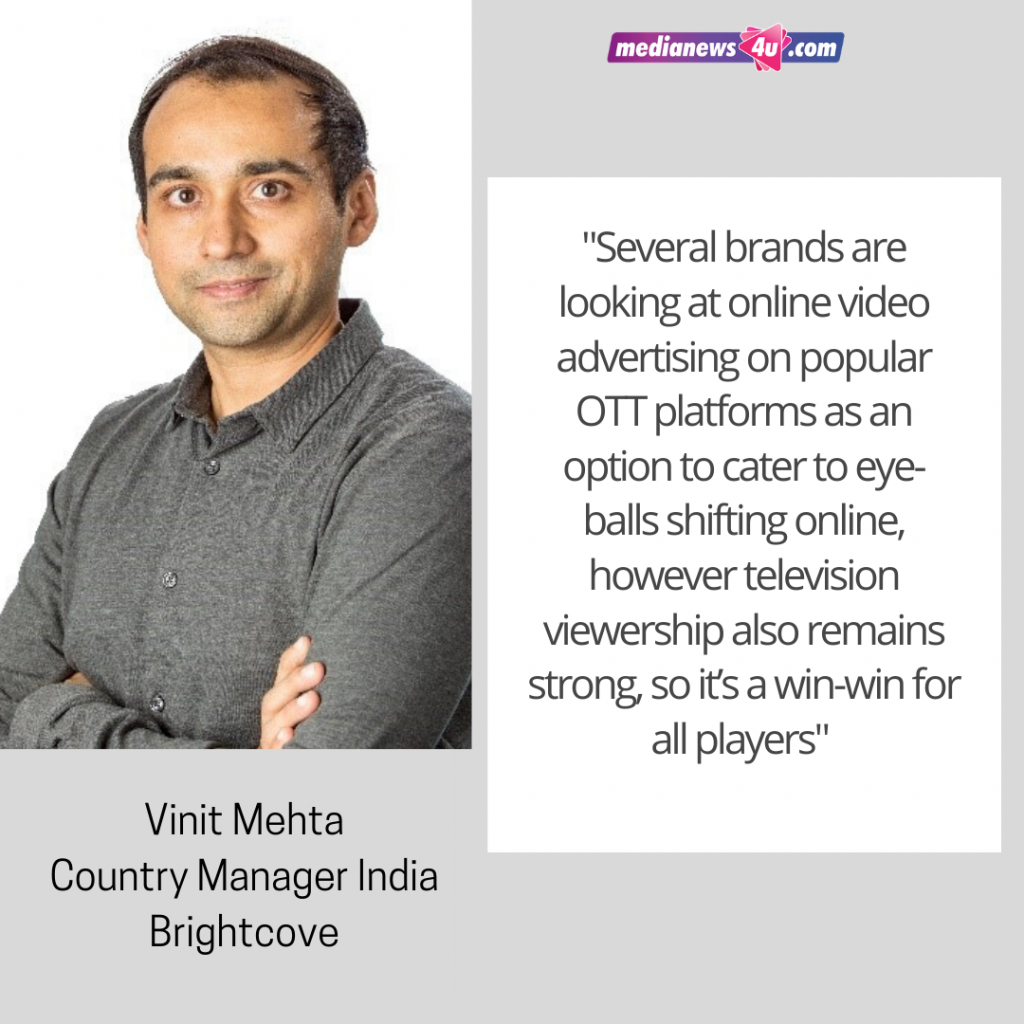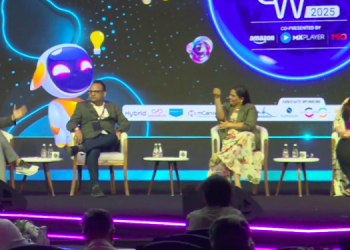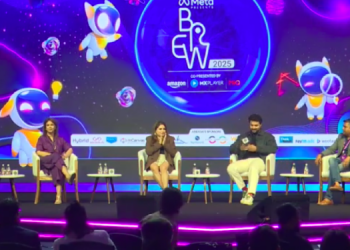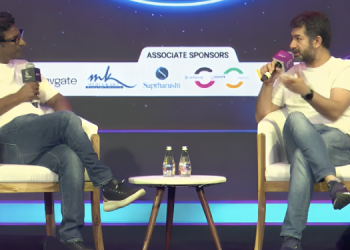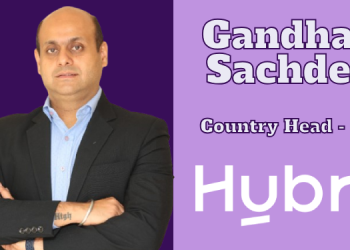 Brightcove is a cloud-based, online video streaming platform powering live and video-on-demand experiences for some of the world’s leading broadcasters, publishers and brands.
Brightcove is a cloud-based, online video streaming platform powering live and video-on-demand experiences for some of the world’s leading broadcasters, publishers and brands.
Due to the pandemic enforced lockdown, OTT video consumption numbers have risen exponentially. As out-of-home means of entertainment have dried up, the demand for video and audio streaming has swelled. Mindshare India and Vidooly have reported a steep increase in content consumption. The time spent by the average user is over 4 hours per day as compared to a previous ~1.5 hours on social media platforms. The ‘Education’ category has reported a 120% spike in the number of uploads post lockdown.
As a pioneer in video technology, Brightcove is well placed to provide an insight into consumers’ behaviour during this period as well as an informed opinion on the future of the video streaming industry.
To talk more about this and how the lockdown has spiked the viewership of OTT platforms, Medianews4u spoke to Vinit Mehta, Country manager, India Brightcove.
As a video technology platform, what is the kind of transformation you are seeing in the Indian market?
Video has skyrocketed during the lockdown period with many organizations making video the centre of their communications strategy. Event organizers are now increasing their reliance on the video to deliver virtual conferences and events. Gyms and fitness brands have embraced new ways to retain their clientele by delivering workout programs live-streamed to mobile devices or through apps. OTT service providers are also seeing a spike in streaming traffic as well as subscription sign-ups as the entire population turns to media and entertainment outlets to pass the time at home. Video has also changed how we work effectively and remain engaged while connecting remotely. Education continues to see disruption with several e-learning start-ups launching in India and schools prioritizing video as part of their lesson delivery.
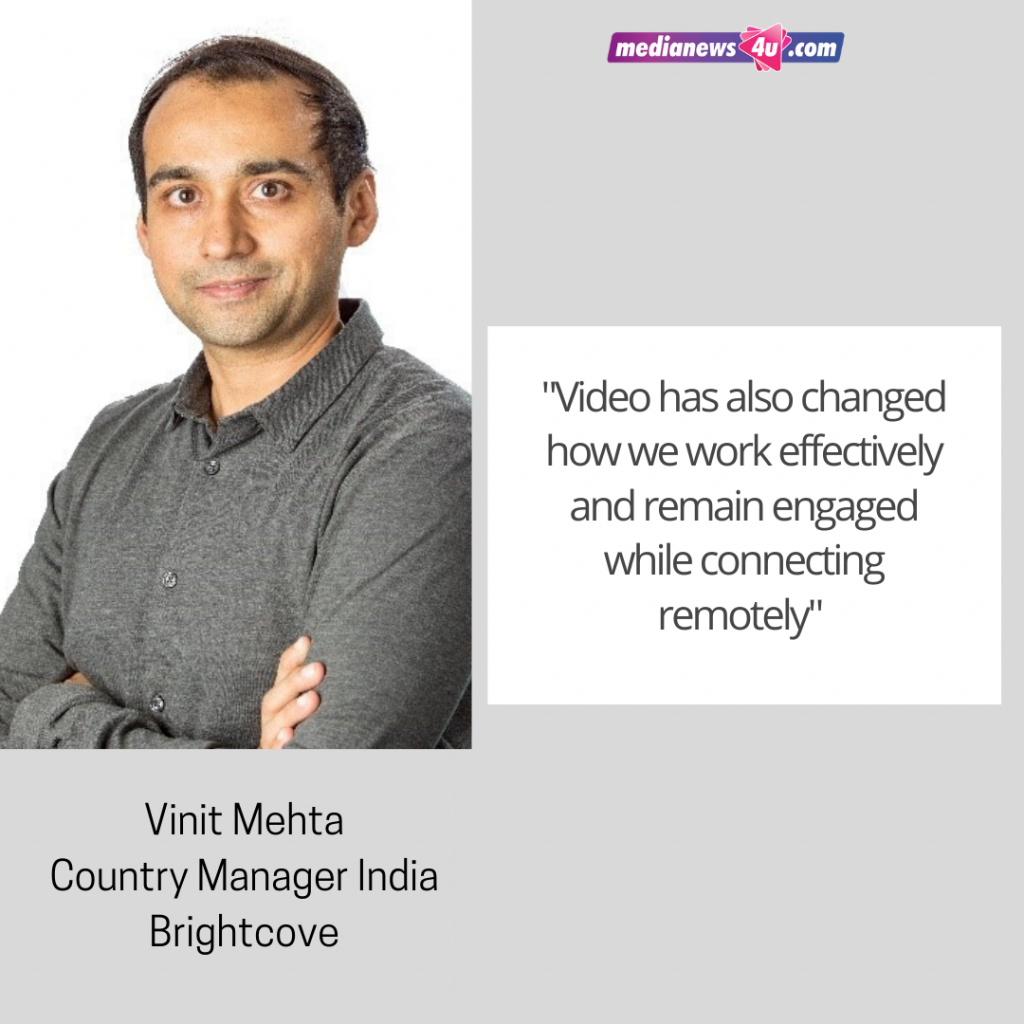
With the lockdown in force, how have the viewing habits of Indians changed?
There are many stats available in the market about how streaming traffic has surged in India as Indians spend more time at home. The kind of content varies by household, however, it includes a bouquet that caters to the tastes of different age groups – the current OTT landscape in India affords tremendous choice to people. Some are even streaming shows as they are working from home, just to have some kind of background noise to fill.
Despite more content being watched, fewer products are being purchased, this has created a conundrum for marketers and a revenue shortfall for content distribution companies. Add to that the gradual shutdown of the content creation industry – studios are closed, sound stages are empty and post-production houses are slowly running out of work. All of this would have an impact on future content libraries, and just how dire of an impact may be too soon to tell.
Regardless of what type of content we are consuming, the fact is that every generation is likely to be relying on media content during this pandemic to inform, entertain and distract. This creates a rare window of opportunity for media companies to reach, engage and monetise a captive audience.

Video conferencing is the thing now, Google has also started its own platform, can you share your thoughts on this and will it become the norm post the lockdown?
Video conferencing has been widely adopted as the norm before the lockdown and has seen usage rise tremendously during the lockdown period. In the current lockdown period, countless organisations have implemented business continuity plans with a focus on being able to operate anywhere, ensuring staff can be productive remotely, all in a bid to adopt some sense of business as usual.
Once employees return to their offices, the new reality is one where video conferencing will continue to play an important role in our day to day working life.
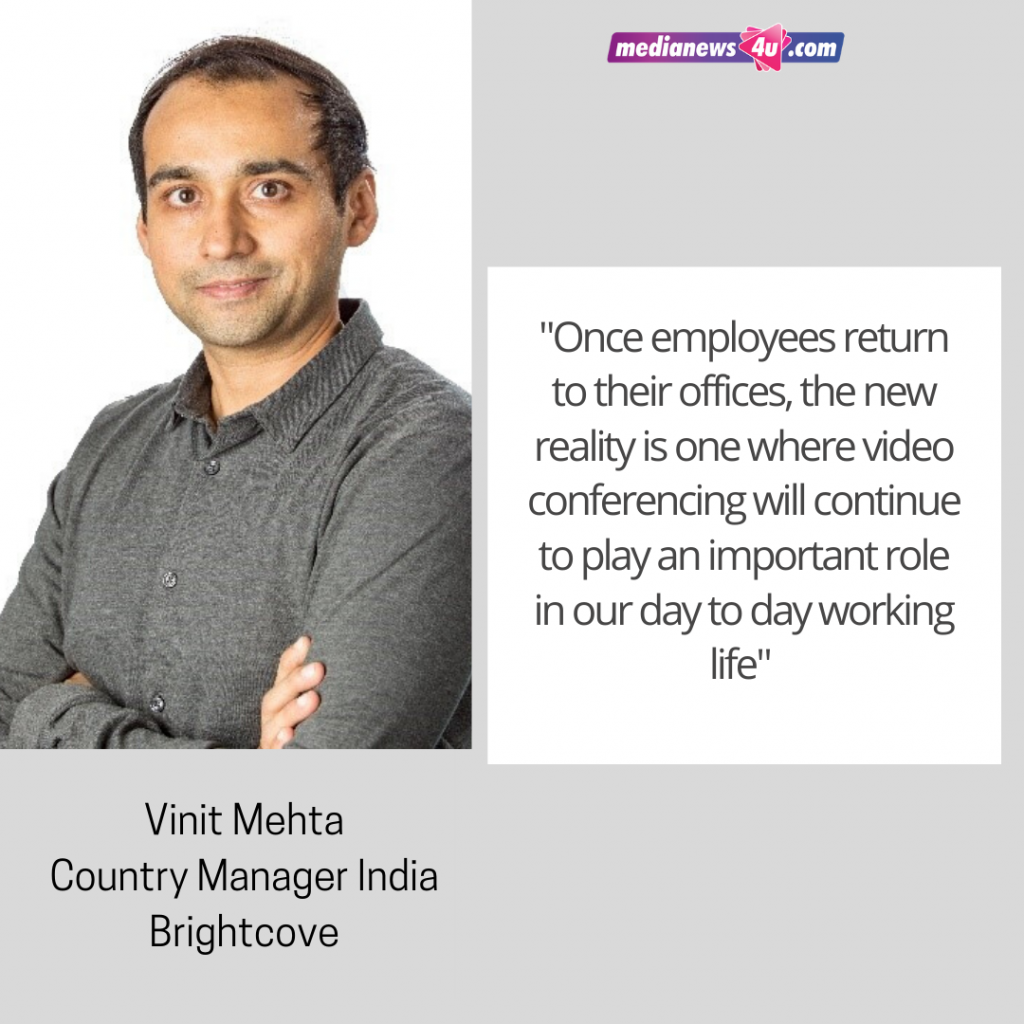
All schools have started online classrooms, many e-learning platforms have started short courses, and will it die down once the lockdown is lifted?
Online classrooms and e-learning platforms are likely to thrive, not die down post the lockdown. For many educational institutions, having a gap in the school semester has been an eye-opening experience and for some, it has been a struggle. Being homeschooled or children missing a school semester/term for a prolonged period is something that not many of us could ever imagine. In this scenario, the new normal for educational institutions is ensuring continuity of education no matter the crisis. Online video is the only way to engage students and educational institutions, for the most part, are doing their part to make sure there is continuity of learning.
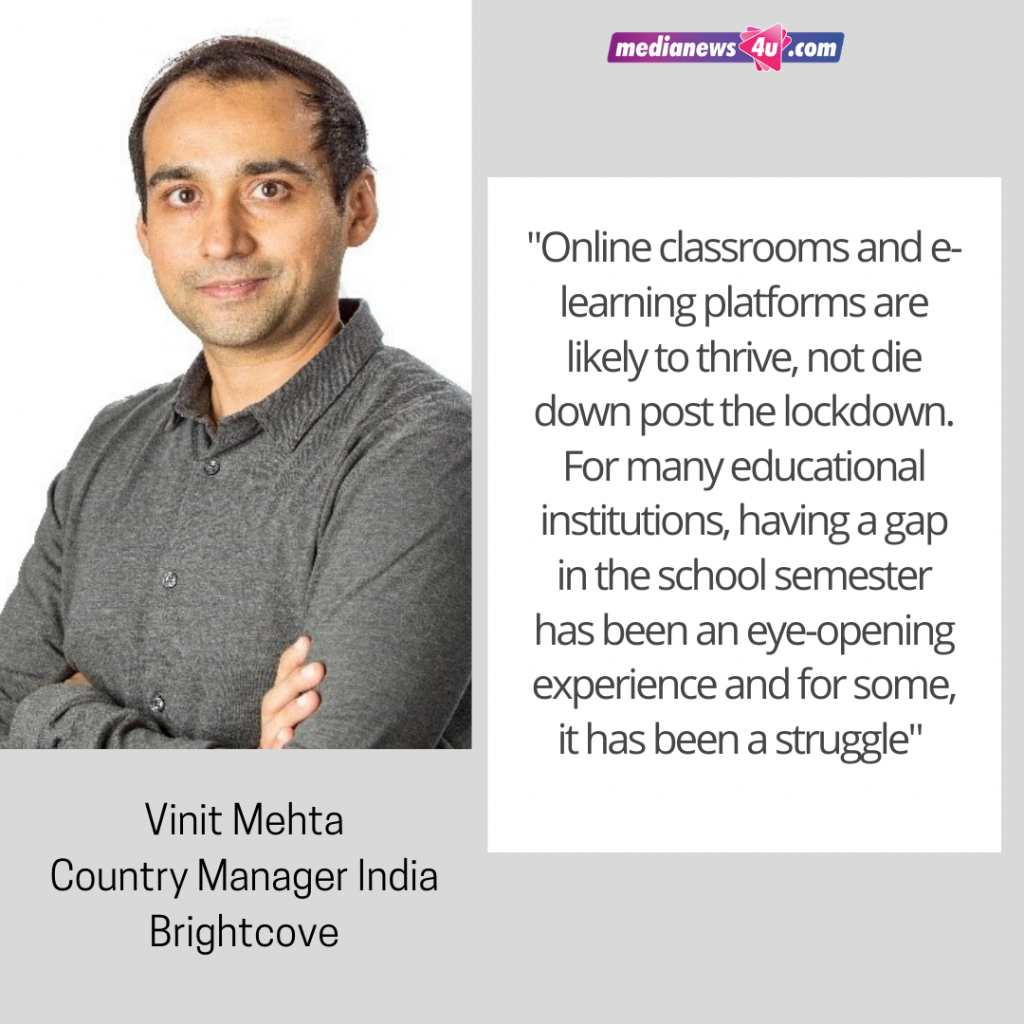
Many schools have announced that post lockdown they would continue with online classes, do you think this is a good move?
It is a necessary move. This is definitely one of the best practices that educational institutions are learning to adapt and adopt, just so that they are not caught off-guard in case there are future crises. Business continuity applies to many industries, across many organisations regardless of size.
As Brightcove, what will your strategy post the lockdown?
Even before the official government-mandated lockdown, Brightcove globally took steps to prepare our staff to work-from-home. A week prior to the work-from-home mandate, Brightcove pressure tested our global business operations and IT systems to ensure that we have the necessary protocols and capacity in place to operate remotely and address any productivity disruptions immediately. It was only after this pressure test that our entire workforce moved into work from home mode.
Our strategy post-lockdown will be centered around firstly the health and safety of our employees. This means implementing a refreshed set of policies for telecommuting, business travel and deferring any non-essential travel for as long as possible.
Are you seeing more people subscribing to OTT platforms in this period and will it continue post lockdown?
As numbers from the OTT streaming providers come in, subscriptions have definitely spiked during the lockdown period. Whether this will continue post-lockdown will largely depend on the innovations in the content library that OTT owners can execute – freshness and exclusivity of content is the key to their success.
During the lockdown, live sports content has taken a major hit with viewership down as much as 400% in the US. To counter this, content owners have offered a library of shoulder content to keep sports fans engaged. But the premium for sports fans is in live sports.
We see sports content returning and going straight to OTT streaming channels post-lockdown. Sports seasons may be rescheduled to a new calendar timing and maybe even delivered without a stadium audience. Sports fans may be hesitant to return to crowded stadiums and may opt to watch sporting matches in the comfort of their homes. This is where an OTT strategy for sports will pay off for content owners and distributors.
Will brands now benefit? Will they get a better ROI?
Some brands have pulled or paused their ad spending as the COVID-19 crisis puts a strain on their businesses, however, at the same time brands are wary about advertising next to negative news. It is a case of brand safety versus brand opportunity. Some brands are thriving during the crisis because they are easing some of the challenges faced by the general population. Brands that are doing well include delivery companies, grocery stores, online retail, insurance, financial services, fitness brands and a few more who have seen a surge in demand for their products and services.
Even though consumers are generally interested in a brand’s response to the COVID-19 crisis, brands do need to rethink their advertising strategies post-lockdown. Several brands are looking at online video advertising on popular OTT platforms as an option to cater to eye-balls shifting online, however television viewership also remains strong, so it’s a win-win for all players.
